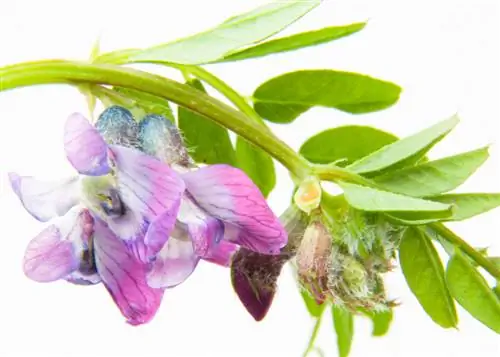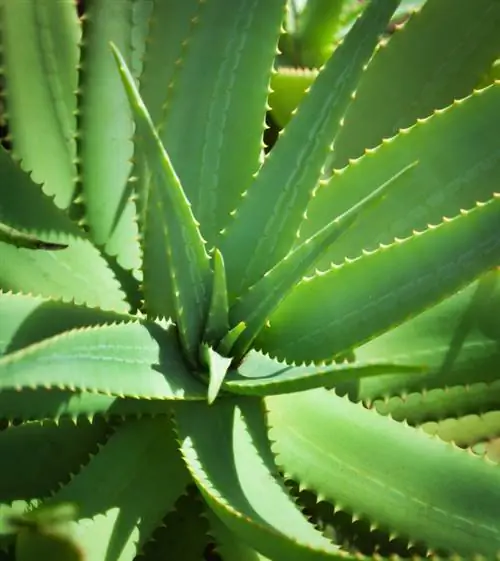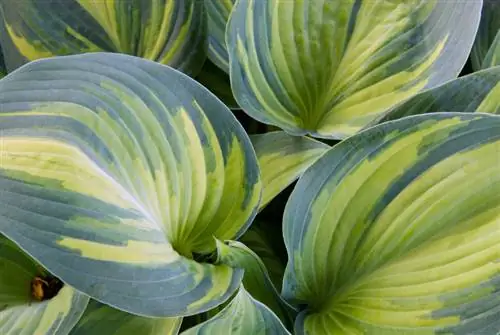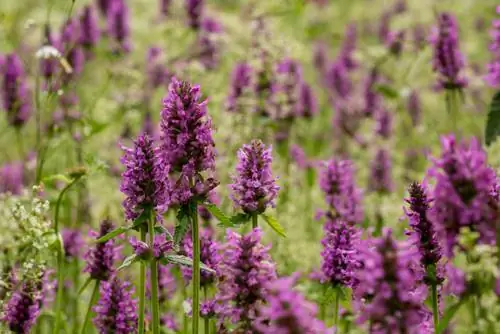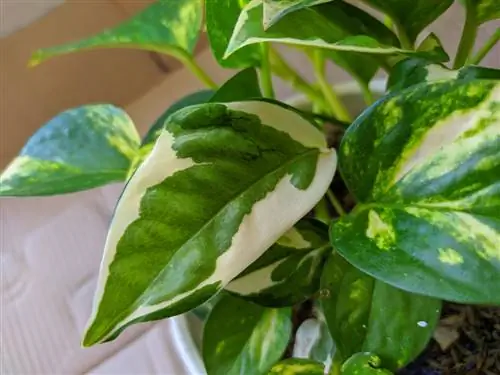- Author admin [email protected].
- Public 2023-12-16 16:46.
- Last modified 2025-01-23 11:20.
Vetch, of which there are around 160 wild and cultivated species, is a family of butterflies. The pretty plants are mainly found in the northern, temperate regions. The annual sweet pea, which is cultivated in many gardens, does not belong to the vetch genus, as is often assumed, but is a subspecies of the common sweet pea. Nevertheless, in this article we would also like to dedicate ourselves to this pretty ornamental plant, as it is also known as vetch in our language.

What different types of vetch are there?
The best-known vetch species include the large-flowered vetch (Vicia grandiflora), sand vetch (Vicia sepium), Tangier vetch (Lathyrus tingitanus), sweet vetch (Lathyus odoratus), perennial vetch (Lathyrus latifolius) and bird vetch. Sweet pea (Vicia cracca). These plants occur in northern, temperate regions and are sometimes also cultivated in gardens.
Large-flowered sweet peas (Vicia grandiflora)
- Thrives wild in Germany too. It was introduced from southern Europe and became wild.
- Height thirty to sixty centimeters.
- Very large flowers in creamy white.
- Cultivated as a very decorative herbaceous perennial.
Brown vetch (Vicia sepium)
- Perennial herbaceous vetch species.
- Thrives wildly and multiplies rapidly, which is why it is often considered a weed.
- Height thirty to sixty centimeters.
- Blue-red flower.
- Popular fodder plant because it contains a lot of protein.
Tanger Vetch, Moroccan Vetch (Lathyrus tingitanus)
- Originally grows wild in North Africa and the Iberian Peninsula.
- Perennial but not frost-tolerant, for this reason it is usually cultivated as an annual in our latitudes.
- Ideal for growing fences and bare areas, but requires a climbing aid (€29.00 on Amazon).
- Growth height up to two meters.
- Special feature: Unlike most Lathyrus species, this vetch produces flattened, relatively large, square seeds.
Sweet pea (Lathyus odoratus)
- In England, where these sweet peas are extremely popular, they are called the “Queen of Annuals”.
- Thrives only as an annual and dies after the seeds ripen in autumn.
- Veiling sweet pea species that can grow up to two meters high.
- Flowers in many different colors from white to blue to red.
- Strongly scented.
Perennial vetch (Lathyrus latifolius)
- Perennial climbing plant, relatively hardy.
- Growth height between 1, 50 and 2 meters.
- Without a trellis, the perennial vetch is also suitable as an attractive ground cover.
- Self-sowing causes a lot of naturalization, so remove dead flowers if possible.
- Flowers pink, white or purple-red depending on the variety.
- The flowers have no scent.
Bird vetch (Vicia cracca)
- Thrives wild in meadows, along roadsides and in open, grassy forests.
- Grows up to one meter high.
- Perennial, perennial plant.
- Forms roots up to thirty centimeters deep and therefore thrives in all types of soil.
Tip
Many of the species of vetch cultivated in gardens and growing wild are slightly poisonous in all parts of the plant, especially the seeds. Therefore, sweet peas should not be planted in gardens where small children play unsupervised.

